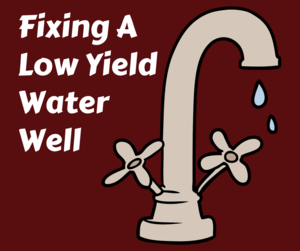CALL TODAY 1-800-441-6281
CALL TODAY 1-800-441-6281

- ABOUT
- WELL DRILLING
- WELL SERVICE
-
WATER TREATMENT
- ABOUT WATER TREATMENT
- WATER TESTING
-
WATER CONTAMINATION
- Arsenic Contamination and Treatment
- Per- and Polyfluorinated Substances (PFAS)
- Radon Contamination and Treatment
- Iron & Manganese Contamination and Treatment
- Hydrogen Sulfide Contamination and Treatment
- Well Water Treatment for Sand and Sediment
- Treatment for Hard Water Contamination
- Water Treatment for Corrosivity
- $
- CONTACT
- EMPLOYMENT
- LEARN MORE
- ABOUT
- WELL DRILLING
- WELL SERVICE
-
WATER TREATMENT
- ABOUT WATER TREATMENT
- WATER TESTING
-
WATER CONTAMINATION
- Arsenic Contamination and Treatment
- Per- and Polyfluorinated Substances (PFAS)
- Radon Contamination and Treatment
- Iron & Manganese Contamination and Treatment
- Hydrogen Sulfide Contamination and Treatment
- Well Water Treatment for Sand and Sediment
- Treatment for Hard Water Contamination
- Water Treatment for Corrosivity
- $
- CONTACT
- EMPLOYMENT
- LEARN MORE
How Does a Submersible Well Pump Work?
If you receive your water from a private well, you're responsible for the testing, monitoring, treatment, and delivery of your home's drinking water. Your water system consists of a number of components that all work together to provide your home with clean safe drinking water. A submersible well pump is the equipment that gets water from your well to your home.
The typical well water system consists of a submerged pumping unit that raises water from your well underground and delivers it to a storage tank where it is held and pressurized until you need it. There are many different types, kinds, and sizes of pumps designed for use in residential water systems. Some pumps serve special purposes like boosting water pressure or supplying a special water outlet as in a distillation system.
Let’s take a look at how the submersible well pump at the heart of your water delivery system actually works.
What Is A Submersible Well Pump?
A submersible well pump is designed to operate beneath the earth’s surface. Like the sump pump found in many homes, a submersible well pump will not work unless it’s completely submerged in liquid. Unlike an above ground pumping system, which sucks water out of the ground, a submersible is designed to push water to the surface.
Pumps can vary in size and there are two basic types of submersible pumps used to deliver potable water, shallow-well and deep-well. The typical submersible well pump consists of a 2 to 4 foot long cylinder that is 3 to 5 inches in diameter. This tube has a hermetically sealed motor that is close-coupled to the body of the water pump. Sealing the motor prevents water from getting inside and causing a short circuit. The motor drives an impeller. When a pressure switch is turned on, the impeller begins to spin drawing water into the pump. The water is then pushed through the pump body and brought to the surface. The rest of the unit consists of a cable connected to the motor and a pipe that transports the water to the surface and into a storage tank.
The size of the unit is based on the yield of the well and the needs of your household. The pump must be rated to meet the normal peak demand of your household rather than simply average use. One important rule is to never install a system that has a greater pumping capacity than your well unless you need to use well storage along with normal yield to meet peak demand.
The Advantage Of Submersible Well Pumps
Above ground water pumps have a higher rate of mechanical problems and failures because of the dynamics of pulling water up from a well. Above ground pumps can lose prime causing the motor to burn out and require replacement. Submersible pumps have fewer problems and can last up to 25 years before needing to be replaced. Cavitation is a common problem with above ground pumps. Submersible pumps are not subject to cavitation problems due to the fact that they are usually deep beneath the surface of the water.
Your well pump is the heart of your drinking water delivery system. Using a submersible pump to push water from your well to your home is an efficient and relatively maintenance free means of providing safe plentiful drinking water for both you and your family. If you suspect a well pump problem and need to speak to a water well technician, contact us at Skillings & Sons.

